Welcome to a fascinating journey through Earth’s wonders with our collection of engaging and educational Earth Facts For Kids! Explore the boundless oceans, towering mountains, explosive volcanoes, and unique magnetic poles that make our planet a truly remarkable place to discover. From the protective atmosphere that shields us from harmful rays to the dynamic surface activity that shapes our landscapes, there is so much to learn and appreciate about Earth. Let’s embark on a learning adventure that will spark curiosity, ignite wonder, and inspire a lifelong love for our beautiful blue planet. Join us as we delve into the captivating world of Earth Facts For Kids and uncover the endless treasures that make our home a unique and extraordinary place to explore.
Earth Facts For Kids
1. Earth is Mostly Water
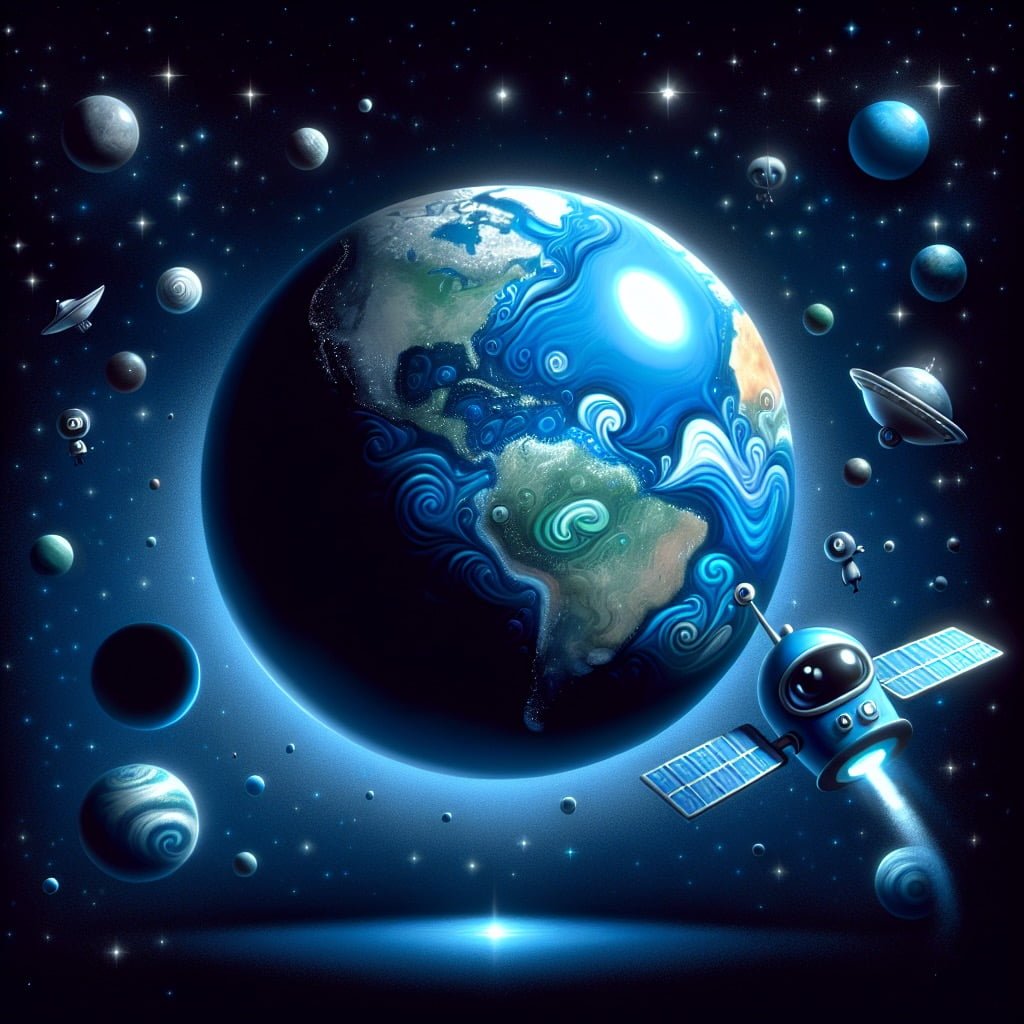
For younger kids: Earth is like a big blue marble because it’s covered mostly in water!
For older kids: Approximately 71% of Earth’s surface is covered by water, with the remaining 29% consisting of land. This makes our planet unique among all the known celestial bodies.
Detailed explanation:One of the most fascinating Earth Facts For Kids is that our planet is mostly covered by water. In fact, water covers about 71% of the Earth’s surface, with the remaining 29% consisting of land. This abundance of water plays a crucial role in shaping our planet and sustaining life as we know it.
The water on Earth can be found in various forms, including oceans, rivers, lakes, and glaciers. Oceans are the largest bodies of water on Earth, covering around 70% of the planet’s surface. These vast expanses of water not only provide habitats for countless marine species, but also play a key role in regulating the Earth’s climate. Oceans absorb heat from the sun, influence weather patterns, and help distribute nutrients and oxygen around the globe.
In addition to oceans, rivers and lakes are important sources of freshwater for both human populations and wildlife. Freshwater is essential for drinking, agriculture, and sanitation, making it a precious resource that must be managed carefully. Glaciers and ice caps, although not as visible as oceans and rivers, also play a significant role in the Earth’s water cycle. These frozen reservoirs store massive amounts of freshwater, releasing it gradually into rivers and oceans.
Overall, the abundance of water on Earth is a key factor in making our planet habitable for a wide variety of species, including humans. It is our responsibility to protect and preserve this precious resource for future generations. By understanding and appreciating Earth’s water cycle, we can work towards sustainable solutions that benefit both the environment and our own well-being.
Earth Facts For Kids
2. The Tallest Mountain is on Earth

For younger kids: Earth has the tallest mountain called Mount Everest, which is super high!
For older kids: Mount Everest, located in the Himalayas, is the highest point above sea level on Earth, reaching a towering height of 29,032 feet (8,849 meters).
Detailed explanation:One of the most fascinating Earth Facts For Kids is that the tallest mountain on Earth is actually Mount Everest. Located in the Himalayas on the border between Nepal and Tibet, Mount Everest reaches an astonishing height of 29,029 feet above sea level. This majestic peak is known for its harsh weather conditions, high altitude, and challenging climbing routes, making it a popular but dangerous destination for experienced mountaineers.
Mount Everest was formed millions of years ago by the shifting of tectonic plates and the collision of the Indian and Eurasian continental plates. It continues to grow at a rate of around half an inch per year, due to the ongoing movement of these plates. The mountain is made up of different types of rock such as limestone, shale, and granite, which were pushed upwards by powerful geological forces.
The first successful summit of Mount Everest was achieved by Sir Edmund Hillary of New Zealand and Tenzing Norgay, a Sherpa of Nepal, in 1953. Since then, thousands of climbers from around the world have attempted to reach the summit, with varying degrees of success. Climbing Mount Everest is considered a major accomplishment in the world of mountaineering, but it also comes with significant risks such as avalanches, extreme weather, and altitude sickness.
In conclusion, Mount Everest stands as the tallest mountain on Earth, a testament to the immense power and beauty of our planet’s geological processes. Its towering height and challenging conditions continue to captivate adventurers and scientists alike, making it a symbol of human perseverance and the wonders of the natural world.
Earth Facts For Kids
3. Earth Has the Largest Volcano
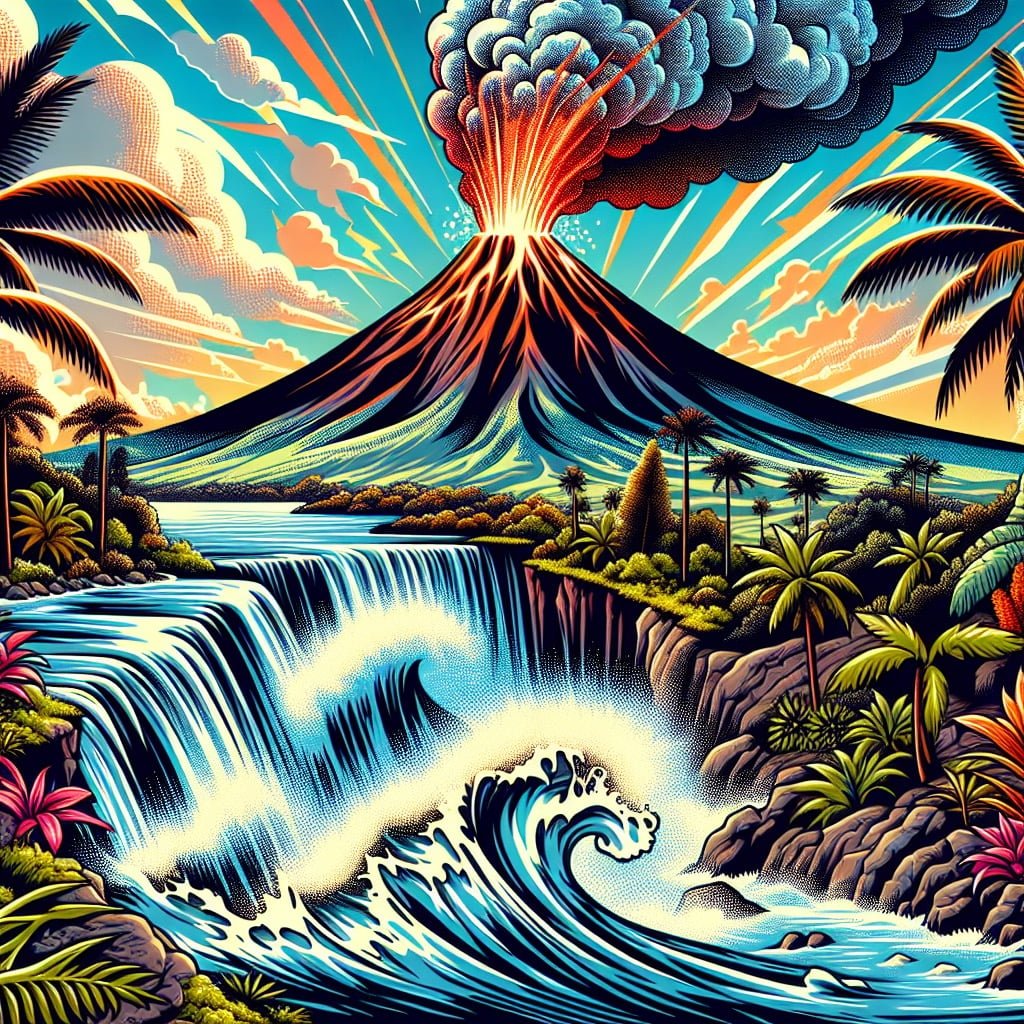
For younger kids: Earth is home to the biggest volcano called Mauna Kea, which is really huge!
For older kids: Mauna Kea, located in Hawaii, is the tallest volcano on Earth, measuring about 33,500 feet (10,210 meters) from its base on the ocean floor to its summit above sea level.
Detailed explanation:One of the most fascinating Earth Facts For Kids is that our planet is home to the largest volcano in the solar system, Mauna Loa. Located in Hawaii, Mauna Loa is classified as a shield volcano, known for its gentle sloping sides and vast expanse. Standing at over 13,000 feet above sea level and extending another 16,400 feet below the ocean surface, Mauna Loa’s total height from base to summit is over 29,000 feet, making it the tallest mountain on Earth when measured from its base on the ocean floor.
Mauna Loa’s size is truly incredible, with a volume of approximately 19,000 cubic miles, which is more than enough to fill the entire Grand Canyon several times over. This massive volcano is formed by layers of basaltic lava that flow smoothly and steadily, creating the wide and gently sloping shape that characterizes shield volcanoes. Mauna Loa is also one of the most active volcanoes on Earth, with eruptions occurring on average every few years. Despite its frequent activity, the lava flows from Mauna Loa are relatively slow-moving and pose minimal threat to human populations, allowing scientists to study and monitor its behavior up close.
In addition to its impressive size and activity, Mauna Loa plays a crucial role in shaping the landscape and ecosystems of Hawaii. The nutrient-rich volcanic soil of the island supports a diverse range of plant and animal species, making it a unique hotspot of biodiversity. Understanding the geology and dynamics of Mauna Loa provides valuable insights into the formation of volcanic islands and the processes that shape our planet’s surface over millions of years.
Earth Facts For Kids
4. Earth is the Only Planet with Life

For younger kids: Earth is special because it’s the only place with so many different animals, plants, and people!
For older kids: Among all the planets in our solar system and beyond, Earth is the only known celestial body that harbors life in a rich variety of forms.
Detailed explanation:Earth, often referred to as the “Blue Planet,” is the only known planet in our solar system that harbors life. This fact is truly remarkable when we consider the vastness of the universe and the countless other planets and celestial bodies that exist beyond our own. Earth’s unique combination of factors such as its distance from the sun, presence of liquid water, and protective atmosphere make it the perfect environment for life to thrive.
One of the key Earth Facts For Kids to understand why our planet is able to support life is its position within the habitable zone of our solar system. This means that Earth is not too close to the sun, where temperatures would be too hot for life to exist, nor is it too far away, where temperatures would be too cold. Instead, Earth is situated at just the right distance to maintain a stable and moderate climate that is conducive to life.
Another crucial factor that sets Earth apart from other planets is the presence of liquid water on its surface. Water is essential for all known forms of life, serving as a solvent for biochemical reactions and a medium for transporting nutrients within organisms. The abundance of water on Earth, in the form of oceans, rivers, and lakes, provides the necessary conditions for life to flourish.
Additionally, Earth’s atmosphere plays a vital role in supporting life by protecting the planet from harmful radiation and maintaining a stable climate. The atmosphere contains gases like oxygen, nitrogen, and carbon dioxide that are essential for the survival of living organisms. Without this protective layer, Earth would be exposed to harsh conditions that would make life unsustainable.
In conclusion, Earth’s unique combination of factors such as its position in the habitable zone, presence of liquid water, and protective atmosphere make it the only planet in our solar system known to support life. As we continue to explore the vastness of the universe, we are reminded of the special qualities that make Earth a truly extraordinary and precious place in the cosmos.
Earth Facts For Kids
5. The Earth’s Core is Extremely Hot
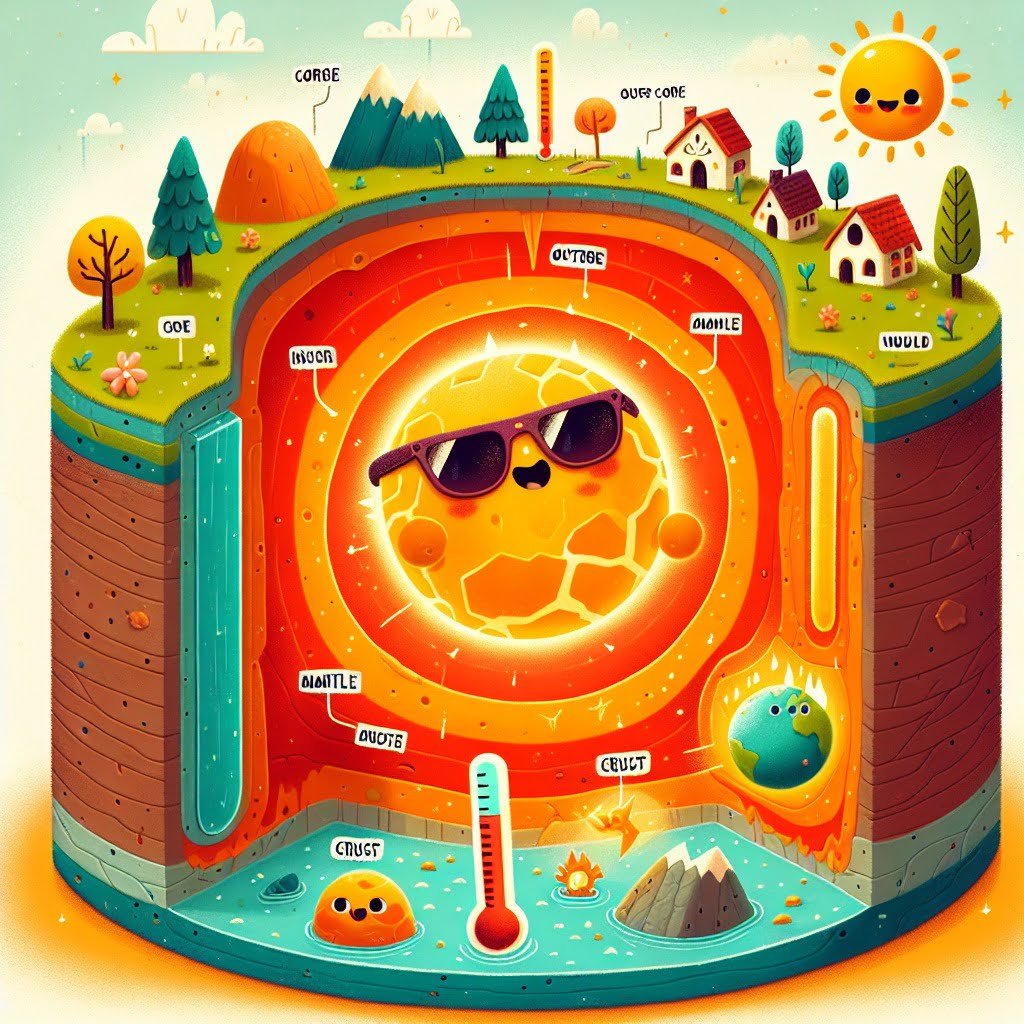
For younger kids: Deep inside Earth, the core is super hot like a boiling pot of soup!
For older kids: At Earth’s core, temperatures can soar to an incredible 9,000 degrees Fahrenheit (5,000 degrees Celsius), making it as hot as the surface of the sun.
Detailed explanation:One of the most fascinating Earth Facts For Kids is that the Earth’s core is extremely hot. In fact, the temperature at the Earth’s core is estimated to be around 5,700 degrees Celsius (10,300 degrees Fahrenheit), which is as hot as the surface of the sun! This incredible heat is generated by several processes taking place deep within the Earth.
The Earth’s core is mainly composed of iron and nickel, and it is divided into two parts: the solid inner core and the liquid outer core. The solid inner core is believed to have a temperature similar to the surface of the sun, while the liquid outer core is slightly cooler, but still incredibly hot.
The heat at the Earth’s core is primarily generated by the radioactive decay of elements such as uranium, thorium, and potassium. As these elements decay, they release heat energy which warms up the surrounding rock and metal in the core. Additionally, the immense pressure at the Earth’s core also contributes to the high temperatures, as the weight of the overlying rocks and layers of the Earth compresses the materials in the core, generating even more heat.
This extreme heat at the Earth’s core plays a crucial role in the planet’s geology and magnetic field. It drives the movement of molten rock in the mantle, leading to plate tectonics and volcanic activity on the Earth’s surface. The heat also creates convection currents in the outer core, which generate the Earth’s magnetic field. So, while the Earth’s core may be incredibly hot, it is also a fundamental part of what makes our planet unique and habitable.
Earth Facts For Kids
6. Earth’s Atmosphere Protects from Harmful Rays
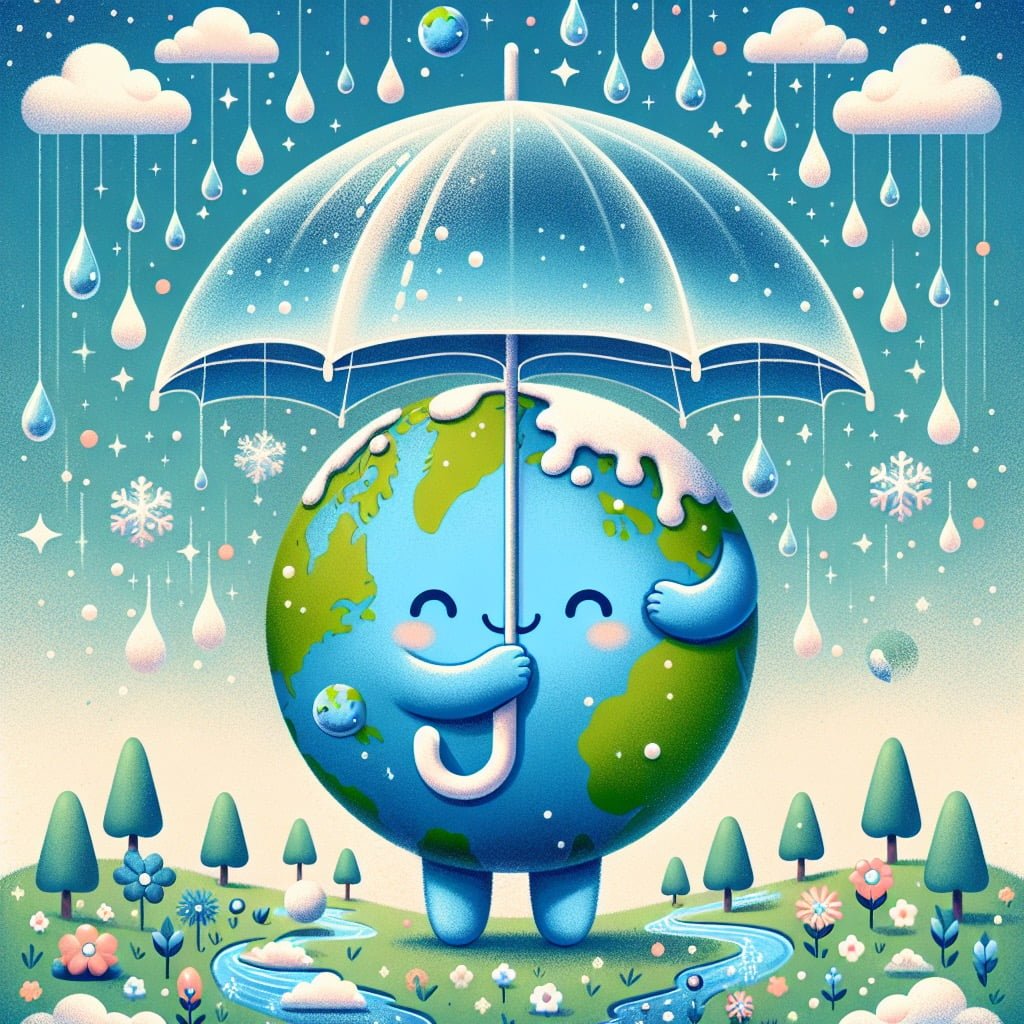
For younger kids: Earth’s atmosphere acts like a giant umbrella, protecting us from things like rain and snow.
For older kids: The Earth’s atmosphere shields us from harmful solar radiation, regulates temperature, and also plays a crucial role in the water cycle.
Detailed explanation:Earth’s atmosphere plays a crucial role in protecting all life on the planet from harmful rays coming from the sun and outer space. This layer of gases surrounding the Earth acts as a shield, filtering out dangerous ultraviolet (UV) radiation and other harmful rays that could be detrimental to living organisms.
One of the main components of Earth’s atmosphere that helps in protecting us from harmful rays is the ozone layer. The ozone layer is a region of the Earth’s stratosphere that contains a high concentration of ozone molecules. These molecules absorb and scatter the majority of the sun’s ultraviolet radiation, preventing it from reaching the Earth’s surface in harmful amounts. Without this protective layer of ozone, life on Earth would be exposed to dangerously high levels of UV radiation, which can cause skin cancer, cataracts, and other health issues.
In addition to the ozone layer, the Earth’s atmosphere also contains other gases such as nitrogen and oxygen, which help in absorbing and scattering harmful rays. These gases act as a buffer, further protecting us from the harmful effects of excessive exposure to UV radiation.
Overall, Earth’s atmosphere is a vital component in ensuring the survival and well-being of all living organisms on the planet. Understanding Earth Facts For Kids about how the atmosphere protects us from harmful rays highlights the importance of preserving and taking care of our planet’s delicate balance of gases.
Earth Facts For Kids
7. Earth’s Magnetic Field Acts Like a Shield
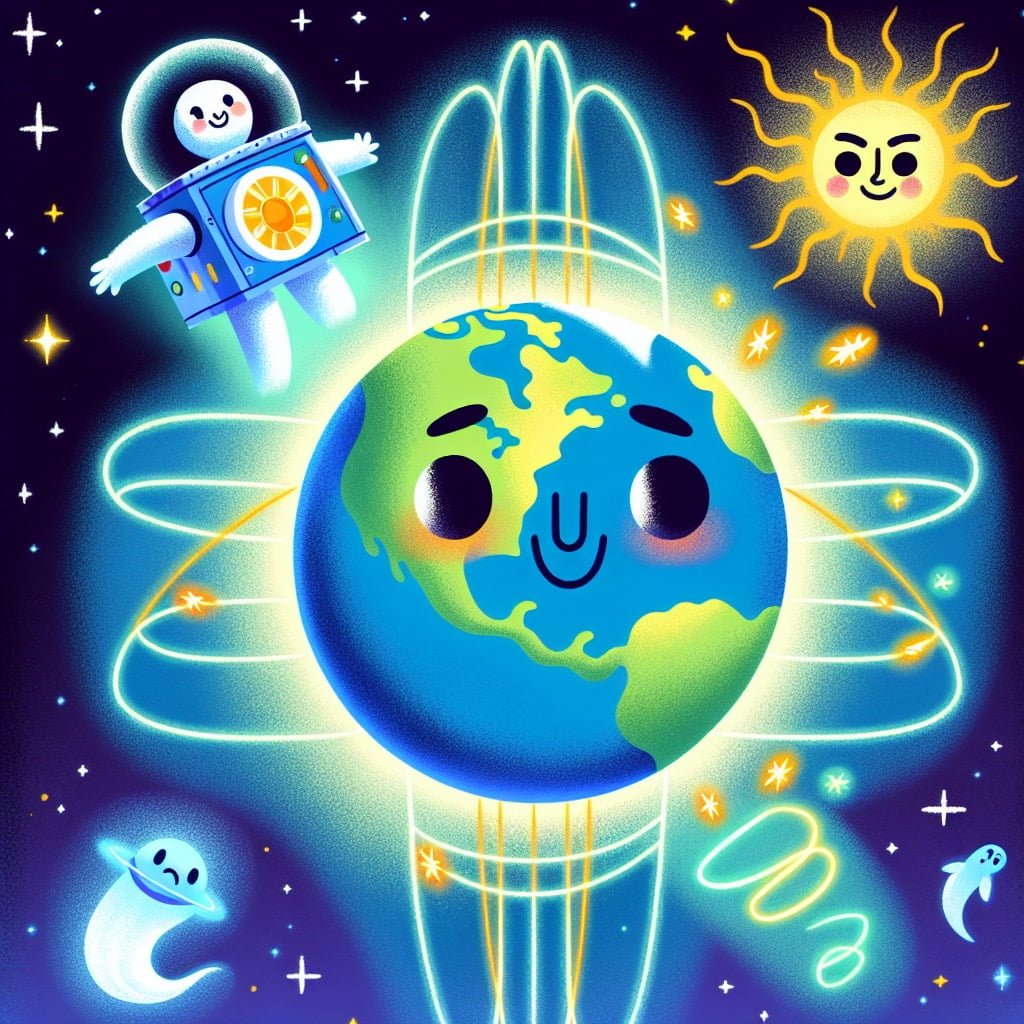
For younger kids: Earth’s magnetic field keeps us safe from spooky space things like solar wind and cosmic rays.
For older kids: Earth’s magnetic field is like a protective bubble that deflects harmful solar wind and cosmic rays, helping to preserve the atmosphere and keep life safe on our planet.
Detailed explanation:Earth’s magnetic field is a crucial component of our planet’s natural defense system, acting like a shield that protects us from harmful solar radiation and cosmic rays. This magnetic field is generated by the movement of molten iron and nickel in Earth’s outer core, a process known as geodynamo. The magnetic field extends from the core to the outer atmosphere, creating a protective barrier around the planet.
One of the key functions of Earth’s magnetic field is to deflect charged particles from the sun, also known as solar wind, which would otherwise strip away our atmosphere and expose us to dangerous levels of radiation. The magnetic field acts as a barrier, redirecting these charged particles towards the poles where they interact with the atmosphere and create the stunning light displays known as the auroras.
For kids learning about Earth facts, understanding the importance of the magnetic field can be both fascinating and educational. Without this invisible shield, life on Earth as we know it would not be possible. The magnetic field also plays a crucial role in guiding migratory animals, such as birds and sea turtles, who rely on it for navigation.
In addition to protecting us from solar radiation, Earth’s magnetic field also helps to shield us from cosmic rays, high-energy particles that originate from sources outside our solar system. These cosmic rays can be harmful to living organisms, so the magnetic field acts as a barrier, reducing the amount of radiation that reaches the surface of the planet.
In conclusion, Earth’s magnetic field is a vital force that safeguards life on our planet by acting as a protective shield against harmful solar radiation and cosmic rays. Understanding this fascinating aspect of Earth’s geology can inspire curiosity and appreciation for the natural world.
Earth Facts For Kids
8. Earth’s Rotation Causes Day and Night
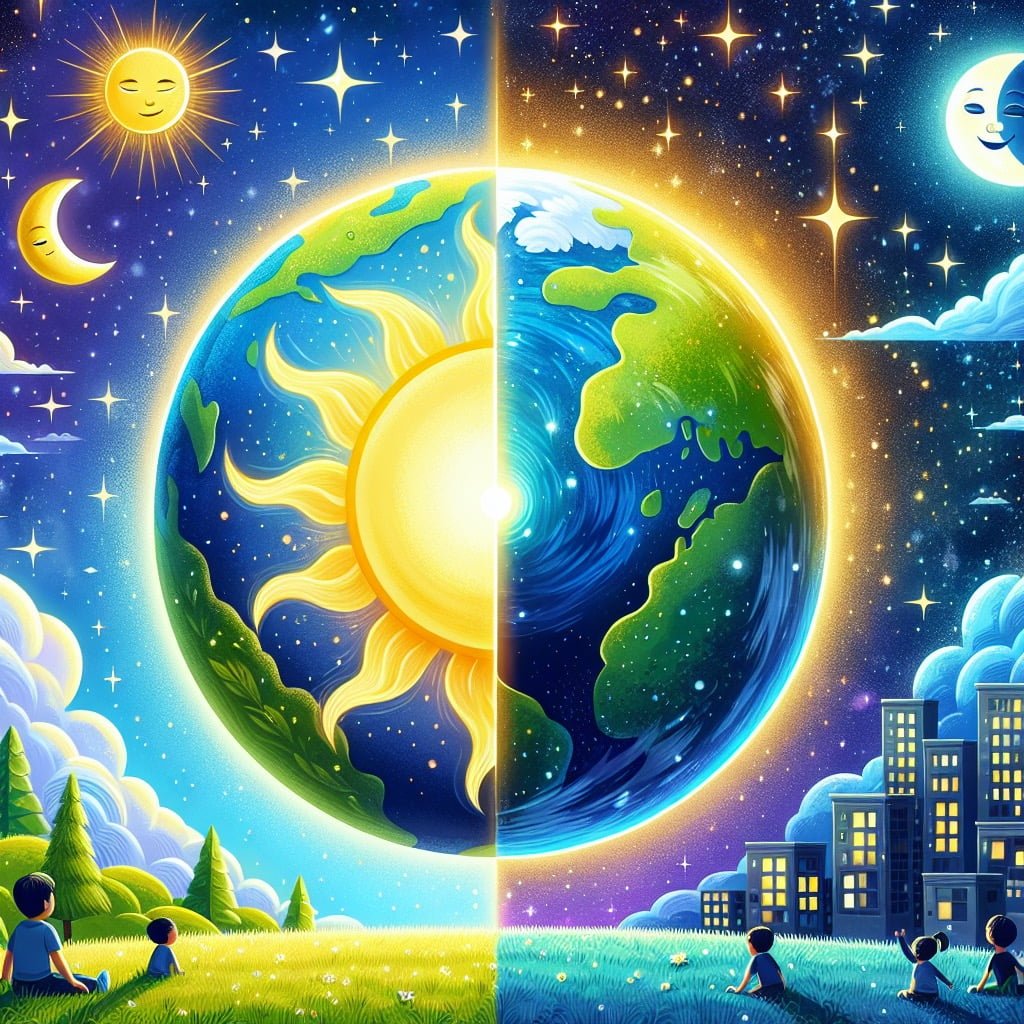
For younger kids: Earth spins like a top, making the sun go up and down to create day and night.
For older kids: The rotation of Earth on its axis at a speed of over 1,000 miles per hour (1,600 kilometers per hour) is what causes the cycle of day and night.
Detailed explanation:One of the fascinating Earth Facts For Kids is that our planet’s rotation on its axis is what causes day and night. Earth rotates on its axis, an imaginary line running from the North Pole to the South Pole, once every 24 hours. This rotation is what gives us the cycle of day and night.
As Earth spins on its axis, different parts of the planet are either facing towards the Sun (daytime) or away from the Sun (nighttime). This is why when it is daytime in one part of the world, it is nighttime on the opposite side. The rotation of Earth also causes the Sun to appear to rise in the east and set in the west as we move through our day.
The speed of Earth’s rotation is not constant across the entire planet. Near the poles, Earth’s rotation is slower, causing the day and night cycle to be longer. Near the equator, Earth’s rotation is faster, resulting in shorter day and night cycles.
It is important to note that Earth’s rotation is not the only factor that determines the length of day and night. The tilt of Earth’s axis and its orbit around the Sun also play a significant role in shaping our planet’s day and night cycle.
In conclusion, the Earth’s rotation is a fundamental aspect of our daily lives, ushering in the cycle of day and night that we experience. Understanding this basic Earth fact can help kids gain a deeper appreciation for the natural world around them.
Earth Facts For Kids
9. Earth Has Explosive Surface Activity

For younger kids: Sometimes Earth can explode with big mountains and fiery volcanoes!
For older kids: Earth’s dynamic surface is constantly reshaped by geological forces, resulting in the formation of mountains, volcanoes, earthquakes, and other spectacular features.
Detailed explanation:Earth Facts For Kids: One of the fascinating Earth facts for kids is that our planet has explosive surface activity. This can be seen in the form of volcanic eruptions, earthquakes, and other geologic phenomena.
Volcanic eruptions occur when magma from deep within the Earth’s mantle rises to the surface. The intense heat and pressure cause the magma to burst through the Earth’s crust, creating volcanic explosions that can send ash, gases, and lava high into the sky. These eruptions can be incredibly powerful and destructive, reshaping the landscape in a matter of hours or days.
Earthquakes, on the other hand, are caused by the shifting of tectonic plates beneath the Earth’s surface. These plates are constantly moving, but when they become stuck or snagged on each other, pressure builds up until it is released in the form of an earthquake. The ground shakes as the energy travels through the Earth, often causing buildings and other structures to collapse.
These explosive surface activities are not only awe-inspiring to witness but also serve to remind us of the dynamic and ever-changing nature of our planet. By studying these phenomena, scientists can learn more about the inner workings of the Earth and potentially predict and mitigate the impacts of future eruptions and earthquakes.
In conclusion, Earth’s explosive surface activity, including volcanic eruptions and earthquakes, is a crucial part of understanding the planet and its processes. These events shape the landscape and impact the lives of those living nearby, making them an important topic of study for scientists and a fascinating Earth fact for kids to learn about.
Earth Facts For Kids
10. Earth Has Unique Magnetic Poles
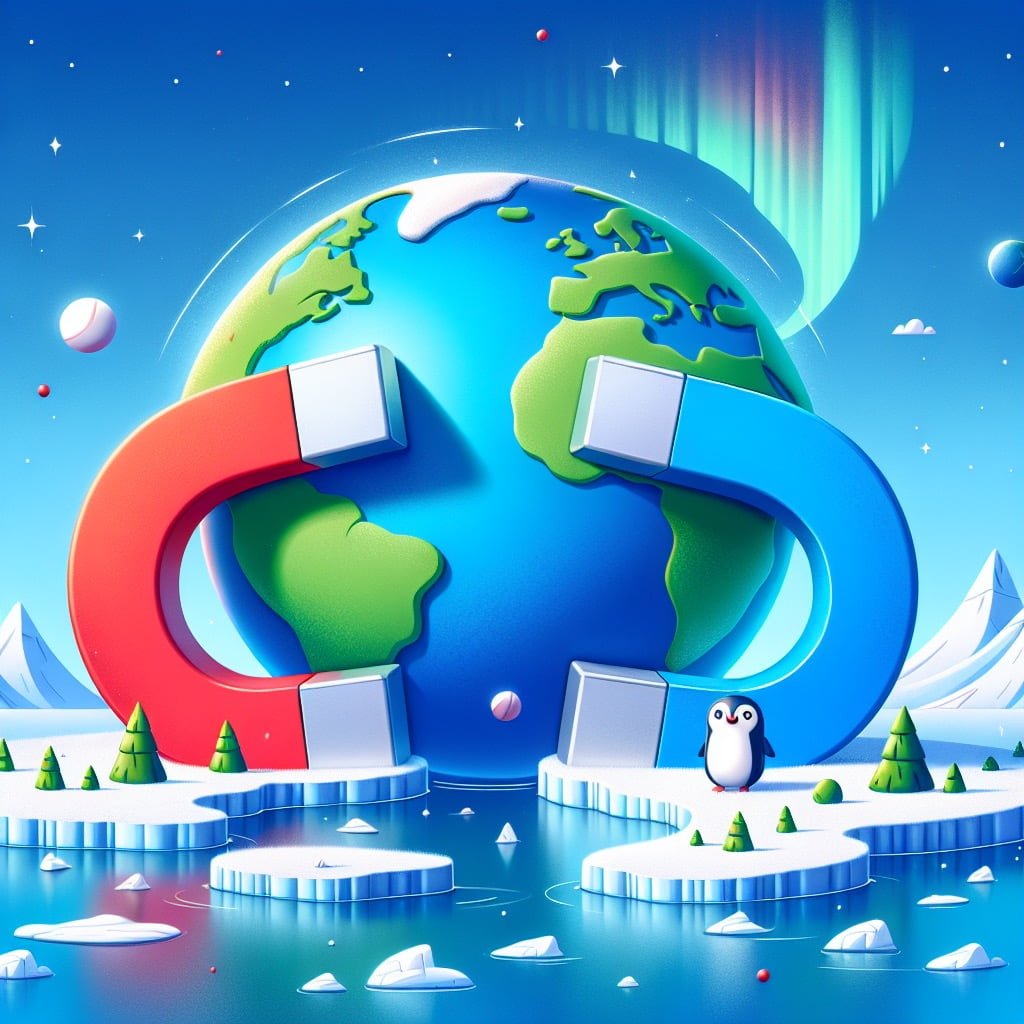
For younger kids: Earth has two special places called the North Pole and the South Pole where magnets act really funny!
For older kids: Earth’s magnetic poles are not aligned with the geographic poles and are constantly moving, creating a fascinating and complex magnetic field around our planet.
Detailed explanation:Earth Facts For Kids: Earth has unique magnetic poles that set it apart from any other planet in our solar system. The Earth’s magnetic field is created by the movement of molten iron and nickel in the outer core. This magnetic field extends out into space and creates a protective shield around our planet, known as the magnetosphere.
The Earth’s magnetic poles are not aligned with its geographic poles. The magnetic north pole is actually located near the geographic south pole, and the magnetic south pole is located near the geographic north pole. This means that a compass needle doesn’t actually point to true north or south, but rather follows the direction of the magnetic field lines.
The Earth’s magnetic poles are constantly moving. The magnetic north pole has been drifting towards Russia at a rate of about 10 kilometers per year. This movement is due to changes in the Earth’s core, which are driven by the heat from the planet’s interior. Scientists believe that this movement is also responsible for the fluctuations in the strength of the magnetic field over time.
The Earth’s unique magnetic poles play a crucial role in protecting our planet from harmful solar radiation. The magnetosphere deflects charged particles from the sun, preventing them from reaching the surface and causing damage to our atmosphere and technology. Without this protective shield, life on Earth would be significantly different.
In conclusion, the Earth’s magnetic poles are a fascinating and important aspect of our planet that help to make it a unique and habitable place for life.
Did You Know?
Did you know that Earth is the only known planet where water exists in all three states: solid as ice, liquid as water, and gas as water vapor?
Summary of Earth Facts For Kids
If you’re looking to ignite a sense of wonder and curiosity in kids about the world we live in, then delving into the fascinating world of Earth facts is the perfect way to do it. This blog post explores the diverse landscapes, unique features, and essential functions of our planet in a way that is engaging and easy for kids to understand. By learning about the protective atmosphere that shields us and the incredible natural wonders that make Earth so special, kids can develop a deeper appreciation for the world around them.
Not only is learning about Earth fun and exciting, but it also provides valuable insights into the delicate balance that sustains life on our planet. By uncovering fun facts about how mountains are formed, the diversity of plant and animal life, and the mesmerizing auroras that light up the night sky, kids can gain a newfound respect for the beauty and complexity of our planet. So, whether you’re a teacher looking for educational resources or a parent wanting to inspire a love of learning in your child, exploring Earth facts is a fascinating journey that is definitely worth taking.
Sources and additional information for Earth Facts For Kids
WikipediaBritannicaNASAEuropean Space Agency (ESA)Space.comAstrophysical JournalSky & TelescopeUniverse TodaySpaceXThe Planetary SocietyAstronomy MagazineHubbleSiteNational Geographic KidsNASANational Air and Space MuseumESA KidsSpace.comThe Planetary SocietyNational Radio Astronomy Observatory (NRAO)Hayden PlanetariumSky & Telescope




